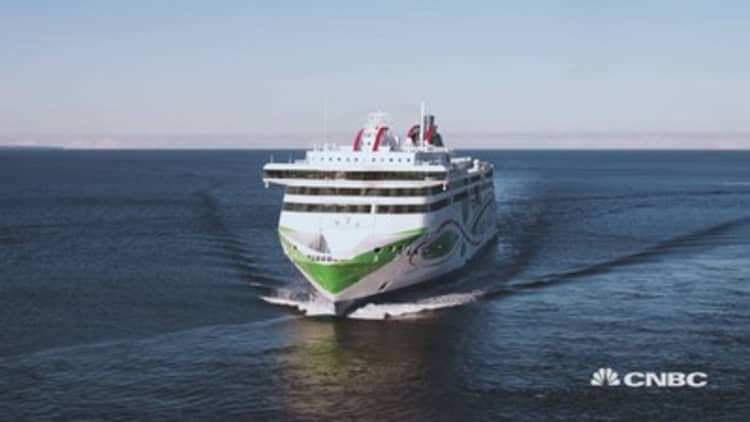
Shipping is a crucial cog in the global economy.
According to the International Chamber of Shipping around 90 percent of global trade is carried by the international shipping industry, so it's unsurprising that the environmental impact of shipping is considerable.
The International Maritime Organization, for example, says that in the period to 2050 maritime CO2 emissions could increase by between 50 and 250 percent.
"Shipping is the most efficient way of transporting goods in the world, but it also… (has) a big impact to the emissions in the world," Ilari Kallio, VP of technology at Helsinki based company Wärtsilä, told CNBC's Sustainable Energy.
"Ninety percent of… world trade is transported through shipping, so… shipping has to contribute to the emissions reduction," Kallio added.
It is within this climate that Wärtsilä is turning to liquefied natural gas, or LNG, as a source of fuel for ships.
On a ferry route between Tallinn in Estonia and Helsinki, a partnership between Wärtsilä and AS Tallink Grupp sees the company provide dual-fuel engines which operate, in the main, on LNG.
"LNG has very good advantages," Kallio went on to say. "It basically cuts 85 percent of the NOx (nitrogen oxides) emissions, it doesn't contain, basically, any sulphur, it doesn't emit any particle emissions and it has basically no visible smoke, so it's (an) extremely good marine fuel."




